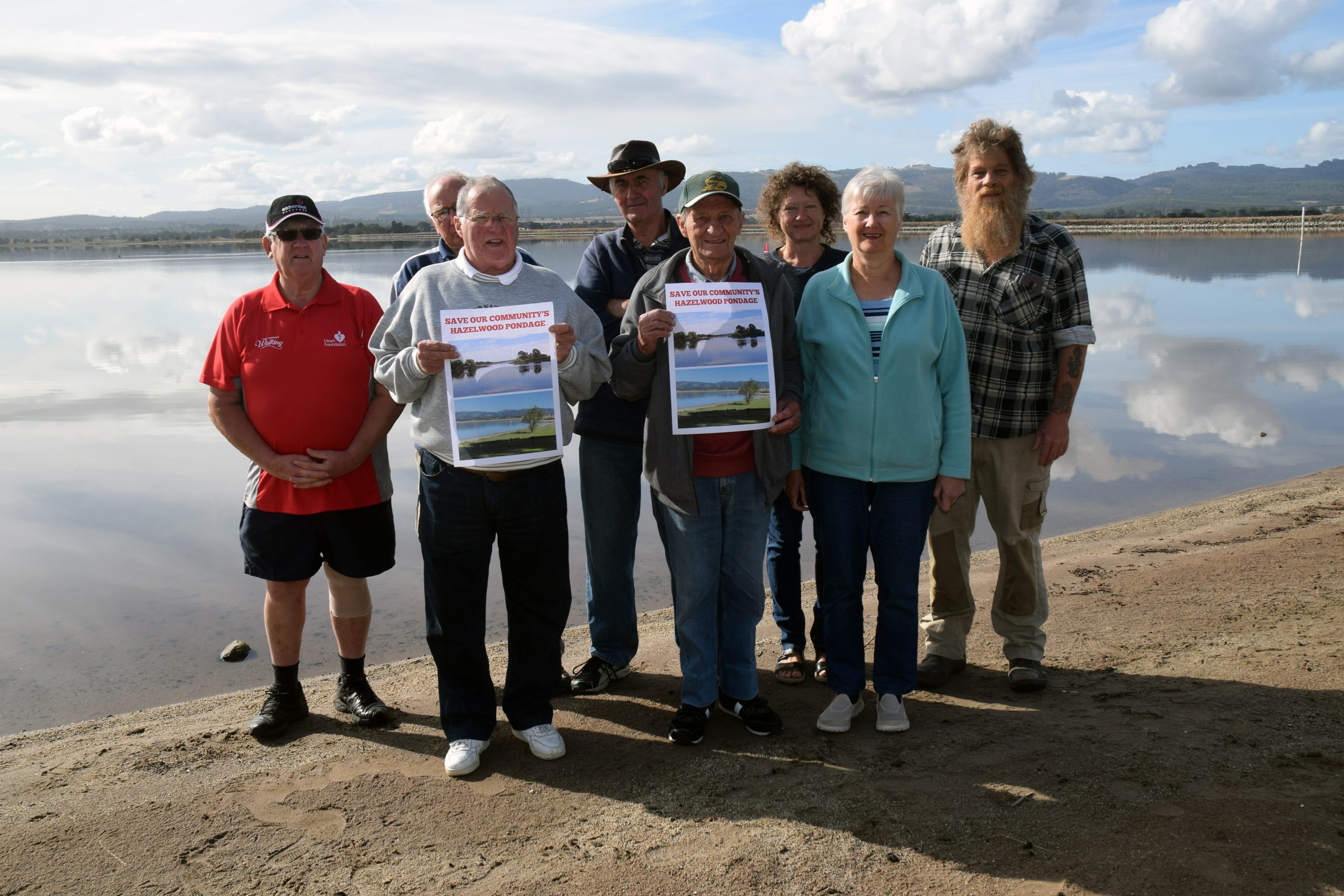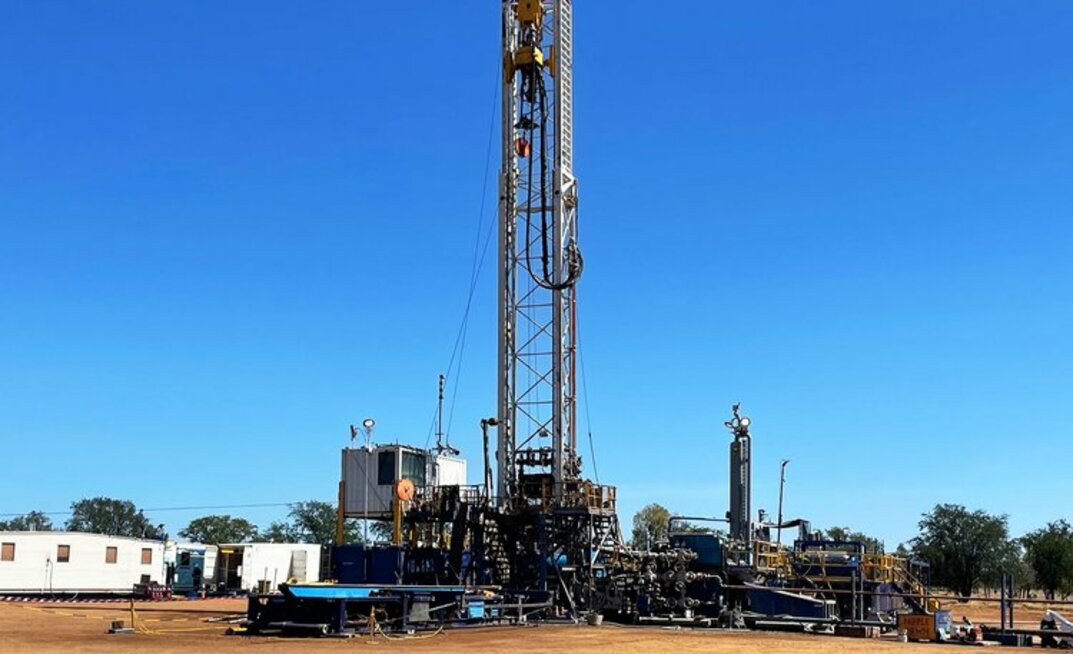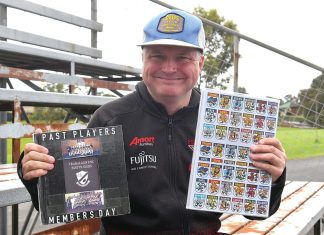By PHILIP HOPKINS
LAKES Blue Energy is increasingly confident that within a few months, its 21-year struggle to get a new big onshore gas field in South Gippsland up and running, will come to fruition.
The company, previously Lakes Oil, has submitted plans to the state government for the Wombat 5 gas well, located a few kilometres west of Seaspray. It is a conventional well and does not require fracking.
Lakes Blue Energy’s chief operating officer, Tim O’Brien, said the plan for Wombat 5 was progressing well.
The company had submitted a drilling proposal, including environmental management, social heritage, stakeholder engagement, safety, and well operations plans last October.
“The Department came back with their request for more information and clarification before Christmas. We have resubmitted with all those clarifications and extra information hopefully satisfied,” he told the Express.
“Now the department is assessing it. Fortunately, there did not appear to be any real matters of concern. The simpler things, we have been able to clarify; we’re reasonably confident there will not be too many revisions.”
Mr O’Brien’s comments came as the chief executive of the Victorian Chamber of Commerce and Industry, Paul Guerra, said Victoria’s gas supplies were dangerously low.
In an opinion piece last Thursday in the Herald Sun, Mr Guerra said experts maintained there are gas reserves onshore and offshore in Victoria.
“So if it’s there, let’s encourage the private sector to find it, as the benefits for Victoria are significant,” he said.
Mr O’Brien said a rig had been lined up to start operating at Wombat 5 mid-year.
“We had planned to share another rig drilling in Port Campbell but that had to go up north, but we are in the process of contracting another one that should be able to drill hopefully in July,” he said.
“We will be testing pretty quickly once we drill and complete the well; hopefully the end of September, we will know whether we have got the commercial flow rate once and for all and will start the development plan. Even at best, we’re two years away from having gas to market. There are still some interesting times for the state in between.”
Mr O’Brien said the gas was very clean and needed little processing, containing no carbon dioxide, mercury and hydrogen sulphide (rotten egg gas).
“We don’t need to go through Longford; we can process ourselves and put it straight into the pipeline,” he said, which is nearby.
It’s more than 20 years since Lakes Oil drilled Wombat 1 in December 2003.
“By the time we have this in production, it will be probably 24 years since we first discovered what is potentially the largest conventional onshore gas resource in Victoria,” he said.
“There is a lot of gas in Victoria, that’s what kept us going for so many years. Wombat 5 was to be drilled in 2014; it was basically approved but got caught up in the (Andrews government) moratorium. If it had been developed 10 years ago, it would have been the stepping-stone to a lot of the other onshore developments, but everyone is still questioning whether onshore Victoria can work in Gippsland; obviously onshore production has been in the Otway Basin for 40 years.”
Mr O’Brien is confident Lakes Blue Energy can provide 50 terajoules of gas daily – 10 per cent of the state’s gas needs from early 2027 when gas shortfalls are expected.
This would not only prove that Gippsland has a lot more gas than traditionally believed, but would also reinforce South Gippsland’s gas sector as gas production from Esso wells in Bass Strait continues to slow.
Mr O’Brien said that Gaffney Cline and Associates, a global consultancy in the energy sector that provides techno-commercial advice, estimated in 2008 a contingent resource (2C) of 293 billion cubic feet in the Wombat Field – “a recoverable resource”
This figure was revised up to 329 billion cubic feet in 2010 after the successful drilling of Wombat 4.
However, this became a problem as the state government took a semantic attitude, stating there was no proven reserves in Victoria.
“To have a proven reserve, you need to have effectively a contract in place, a development plan; you need to be ready to sell the gas effectively. We have contingent resources, which means we have defined a volume of gas, but haven’t proven it to the commercial stage yet but the gas is there,” he said.
“Wombat 5 is designed to prove we can get a commercial gas rate out of this formation.”
Mr O’Brien said the Wombat 1, 2 and 3 wells were not optimised enough for the magic number; but are completed and suspended gas wells, which would likely be incorporated into any field development plan. Wombat 4 was cased and suspended, flowing gas from the deepest interval from a drill stem test (DST) during the drill operations, which Gaffney Cline assessed as having lots of prospective resources.
“The gas was recoverable”, he said, but the no proven reserves argument kicked in.
“This does not acknowledge we have lots of prospective resources and contingent resources. There is gas there. The public does not understand that,” he said.
The Wombat 4 well was effectively approved to be drilled at the end of 2013. Then in April 2014, the Coalition government decided to have a year-long consultation process, but subsequently lost government. The arrival of the Andrews government led to subsequent moratoriums on onshore exploration, coal seam gas and fracking, and more studies.
Mr O’Brien said Wombat 5 was designed as a conventional well that did not need to be fracked – a horizontal well through the top of the Strzelecki formation.
“Wombat 4 will sit there for the time being. We plan to have 10 and 12 wells, depends on how Wombat 5 goes. The aim would be to drill, bring wells online to get up to 50 terajoules a day. As the well starts to decline, we can bring on more wells to maintain supply,” he said.
“Once that supply starts depleting, we have field to the north, the Trifon Field, which we would then start to develop to hopefully maintain the 50 terajoules per day, hopefully for the next 20-plus years to help alleviate the gas crisis which is going to severely impact the state.”
Mr O’Brien said the government has been supportive, has put regulations in place that allow development to go ahead, “to make sure we tick all the boxes for them”.
“They realise Victoria needs gas in the short term; gas is getting more expensive, and there is not enough capacity in the pipeline from Queensland to send it down to handle the big fluctuations we have on high demand days in winter. It was cold last June, reserves nearly ran down, but we were lucky – we had a mild July and August,” he said.











